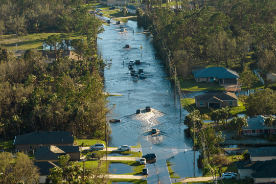Finance
Beyond carbon:TNFD-ready metrics.

For years, climate disclosure has centered almost exclusively on carbon. Yet as markets, regulators, and investors turn their attention to the broader environmental footprint of business, it is becoming clear that carbon alone is not enough. The Taskforce on Nature-related Financial Disclosures (TNFD) represents the next frontier: a framework that asks companies and financial institutions to assess, report, and manage their dependencies and impacts on nature across land, water, oceans, and biodiversity. To meet this demand, organizations must begin preparing TNFD-ready metrics—data points that capture more than greenhouse gases and position them to navigate the growing nature-related risk landscape.
At its core, TNFD emphasizes a “dependencies and impacts” approach. This means going beyond emissions inventories to measure how a company’s operations rely on natural systems—such as water availability, soil fertility, or pollination services—and how those operations, in turn, affect ecosystems. TNFD-ready metrics therefore range from land-use intensity, deforestation exposure, and water withdrawals per unit of output, to waste discharge, nutrient runoff, and biodiversity footprint. These indicators help decision-makers understand not just climate transition risk but also physical and reputational risks tied to degrading ecosystems.
Financial institutions face their own set of requirements. Much like PCAF brought consistency to financed emissions, TNFD pushes lenders, insurers, and investors to disclose their portfolios’ exposure to nature-related risks. Metrics here may include share of lending to high-deforestation sectors, investments in water-stressed regions, or portfolio alignment with global biodiversity targets. Without such data, capital markets remain blind to risks that can materially affect asset values, supply chains, and long-term growth.
Preparing TNFD-ready metrics is not without pitfalls. The science of biodiversity measurement is more complex and localized than carbon accounting, and data availability is still patchy, especially in emerging markets. Companies risk defaulting to generic proxies rather than site-specific indicators, which can undermine credibility. Moreover, integration with existing frameworks—such as the Global Reporting Initiative (GRI), the Science Based Targets for Nature (SBTN), and the EU’s Corporate Sustainability Reporting Directive (CSRD)—is still evolving, creating uncertainty over which metrics will ultimately become standard.
Still, early movers stand to benefit. Firms that develop robust TNFD-ready metrics today will be better equipped to respond to regulatory shifts, investor scrutiny, and consumer expectations tomorrow. Beyond compliance, the process can uncover opportunities: water efficiency innovations, regenerative agriculture practices, or nature-positive investment strategies. In this sense, TNFD is not only about risk management but also about identifying the value that comes from operating in harmony with ecosystems.
The shift beyond carbon signals a broader transformation in sustainability disclosure. Just as carbon accounting reshaped corporate strategy over the past decade, TNFD-ready metrics have the potential to redefine how businesses measure success—placing natural capital at the center of financial and operational decision-making.

At least 20 people killed in Russian glide bomb attack on village in eastern Ukraine

Transition vs. Physical Risk A decision tree for which risk dominates by industry.

Getting Assurance-Ready — Controls and evidence trails for sustainability data.
trending posts

TOP Categories
Google Web Reporters













3 comments
David Bowie
3 hours agoEmily Johnson Cee
2 dayes agoLuis Diaz
September 25, 2025